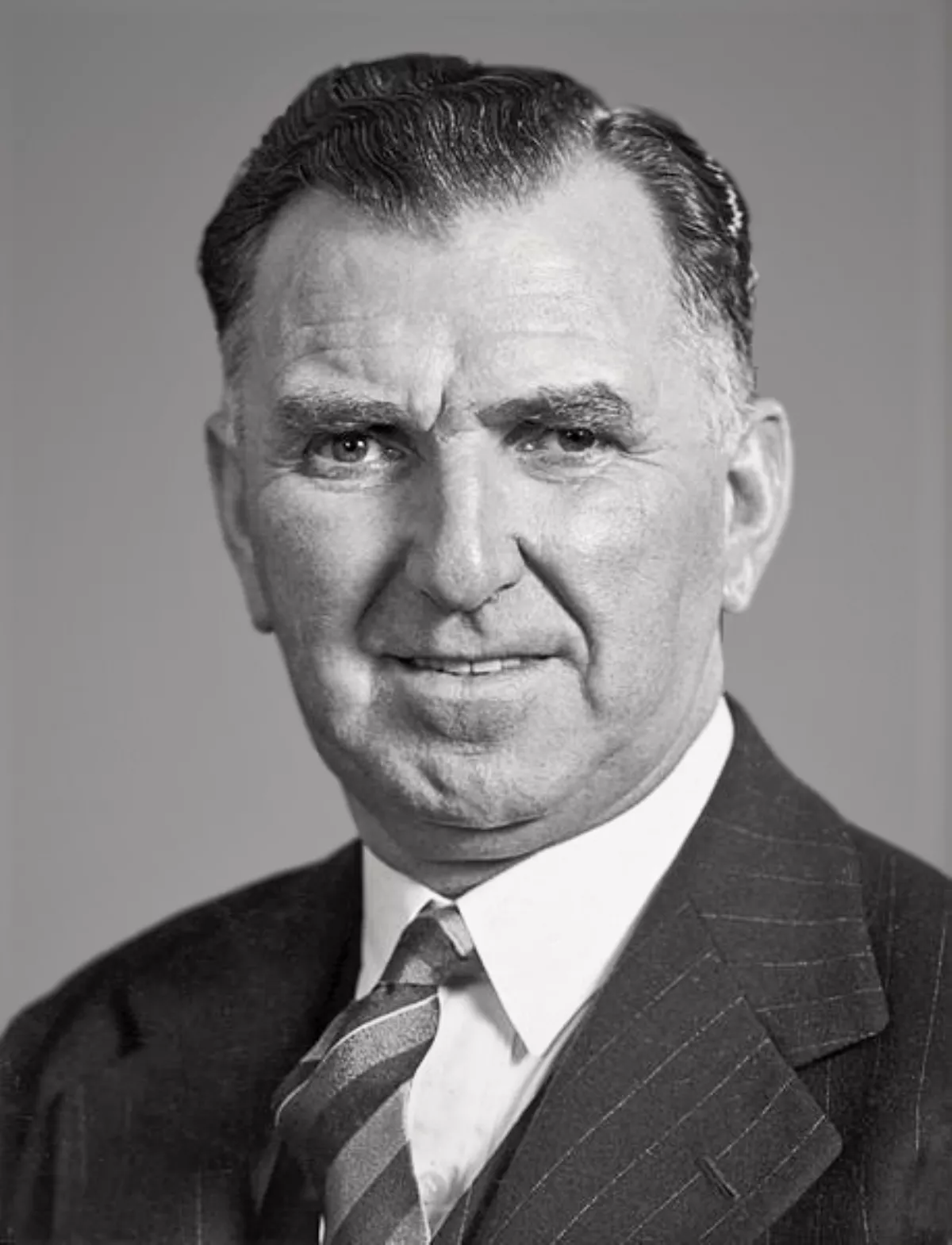 1.
1. Sidney Holland was instrumental in the creation and consolidation of the New Zealand National Party, which was to dominate New Zealand politics for much of the second half of the 20th century.

 1.
1. Sidney Holland was instrumental in the creation and consolidation of the New Zealand National Party, which was to dominate New Zealand politics for much of the second half of the 20th century.
Sidney Holland served briefly in a war cabinet but thereafter attacked the Labour government for its interventionist economic policies.
Sidney Holland led the National Party to its first election victory in 1949.
Sidney Holland's government undertook constitutional change in 1950, by abolishing the Legislative Council, the upper house of parliament, on the grounds that it was ineffectual.
In 1951, Sidney Holland, having confronted locked out dockers and coal miners intent on what he called "industrial anarchy", called a snap election and was re-elected Prime Minister.
Sidney Holland led his party to a third consecutive victory in 1954.
Sidney Holland was born in Greendale in the Canterbury region of the South Island, the youngest child and fourth son of a family of eight children.
Sidney Holland's father, Henry Holland, was a farmer and merchant, who served as Mayor of Christchurch between 1912 and 1919 and became the Reform Party MP for Christchurch North between 1925 and 1935.
Sidney Holland served with the New Zealand Field Artillery and saw action during the Battle of Messines, before being invalided home after contracted a severe illness.
Sidney Holland was a prominent sportsman and sports administrator, representing Canterbury at provincial and inter-island level in hockey.
Sidney Holland later married Florence Drayton in 1920 and the couple raised a family of two boys and two girls.
Sidney Holland successfully retained the Christchurch North seat despite the Labour Party's landslide victory during that election.
In 1940, Sidney Holland replaced National's first non-interim leader Adam Hamilton as the leader of the National Party.
Sidney Holland served as Leader of the Opposition for nearly ten years until the National Party won the 1949 general election.
Sidney Holland represented the Christchurch North electorate from 1935 to 1946, and then the Fendalton electorate from 1946 to 1957.
Sidney Holland served as the Deputy Chairman of the short-lived War Cabinet, which collapsed in September 1942 after the National Party objected to Labour's handling of an unofficial miners' strike in the Waikato region that same month.
Sidney Holland's decision strained relations with both the Labour Government and several National MPs including Gordon Coates and Adam Hamilton, who withdrew from the National caucus and rejoined the War Cabinet as independents.
Sidney Holland repositioned the National Party to accept the main elements of Labour's welfare state, a policy switch seen as necessary for the party to become electable.
Sidney Holland's government emphasised individualism, personal freedom, and private enterprise in accordance with its 1949 electoral platform.
Besides serving as Prime Minister, Sidney Holland served as the Minister of Finance.
However, Sidney Holland did not carry on with his Party's promise to abolish compulsory unionism, which Labour had introduced in 1936.
In 1951, Prime Minister Sidney Holland faced a major challenge from the militant Waterside Workers' Union during the 1951 waterfront dispute.
Sidney Holland's Government reformed the superannuation scheme to enable retiring public servants to claim a portion of their entitlement as a lump sum payment.
Later, in January 1955, New Zealand's traditional ties to Britain and a fear of the Communist domino effect led Prime Minister Sidney Holland to contribute New Zealand troops to the Malayan Emergency.
Sidney Holland kept losing his voice, forcing him to limit his speeches to half an hour.
Once the National Government had been assured of a third consecutive term, Sidney Holland gave up the finance portfolio to Jack Watts, the former Minister of Industries and Commerce.
Amid the Suez Crisis in October 1956, Sidney Holland suffered a mild heart attack or stroke while working in his office.
On 12 August 1957, Sidney Holland announced his retirement at the National Party's annual conference in Wellington.
Sidney Holland remained in Cabinet, as minister without portfolio; but he left the legislature for good at the 1957 general election, in which Holyoake went down to defeat, and which saw the advent of a second Labour Government under Walter Nash.